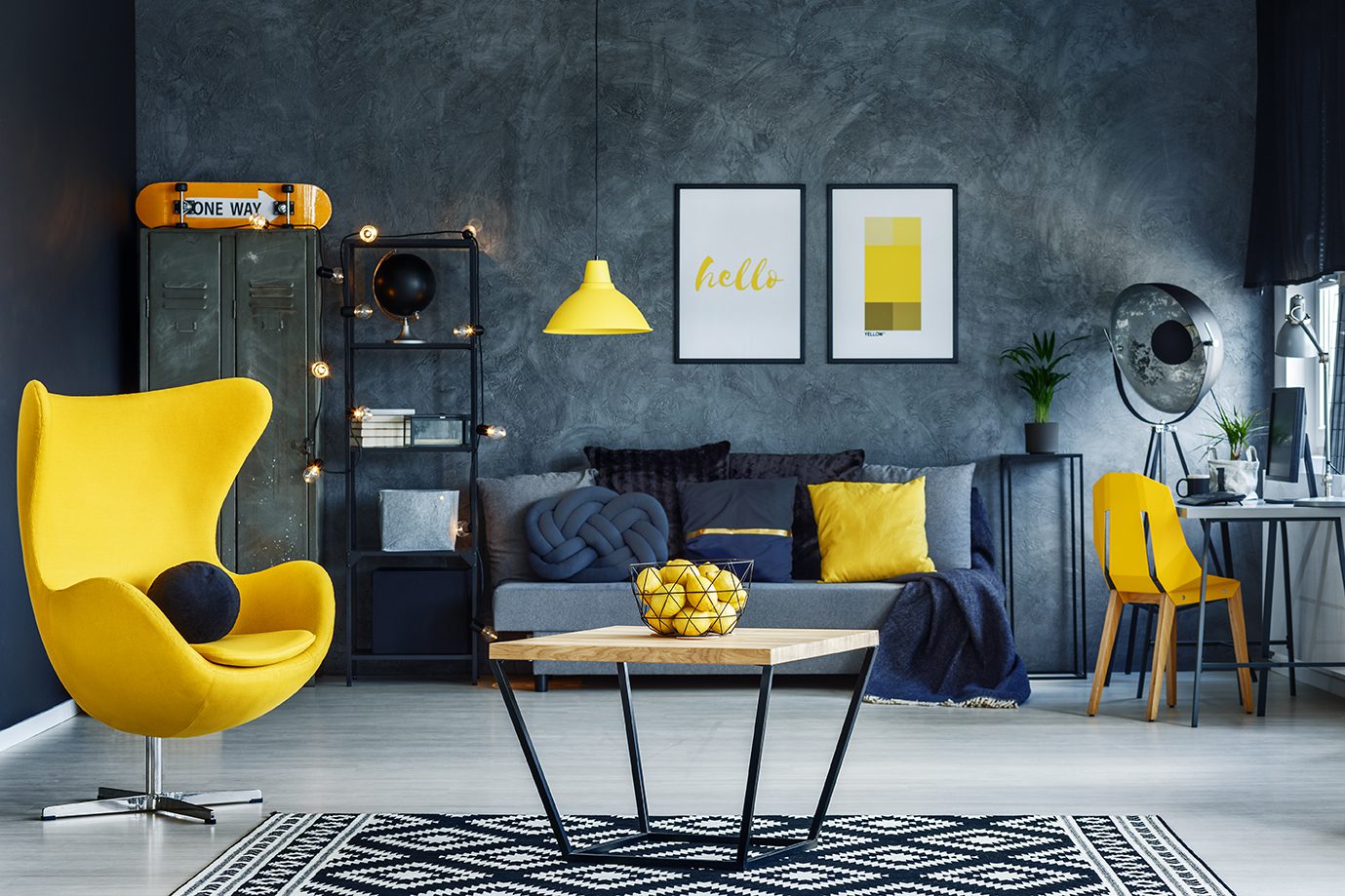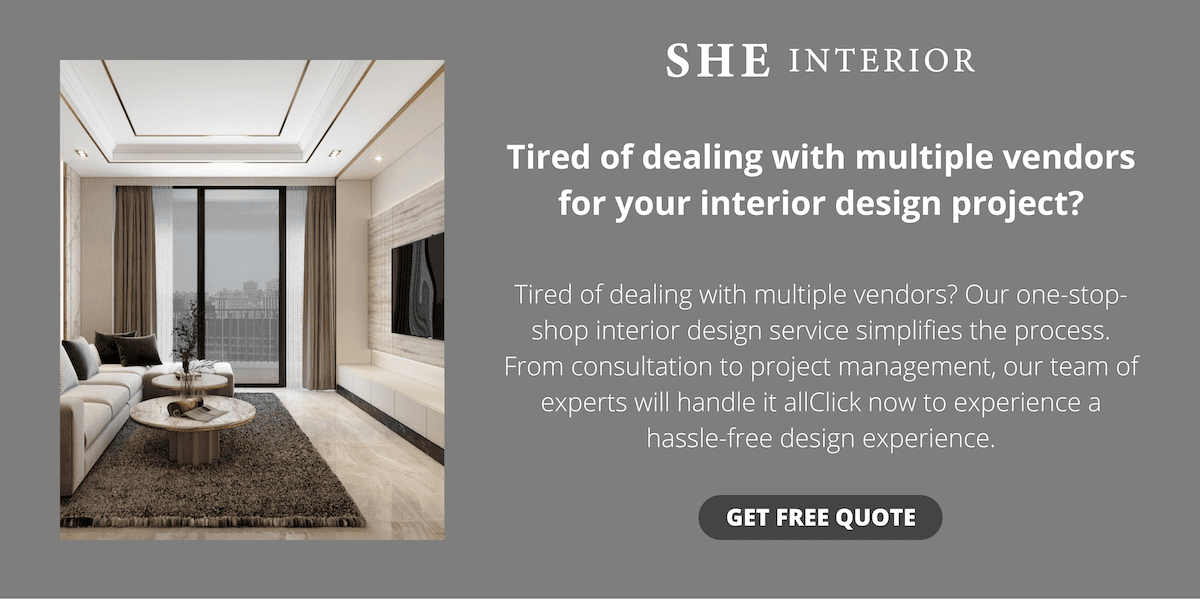If you’re looking for a design style that blends rustic charm with industrial grittiness, industrial interior design might be the perfect fit for you. This style combines raw materials and vintage accents with modern functionality to create a unique, lived-in atmosphere. In this article, we’ll explore the principles of industrial interior design, show you how to incorporate this style into your home, and offer tips for making the most of your industrial-inspired space.

Table on black and white carpet in hygge style living room with designer yellow chair; Shutterstock ID 727390036; Purchase Order: –
What is Industrial Interior Design?
Industrial interior design takes its inspiration from old factories and warehouses, where function was more important than form. This design style features raw, unfinished materials like concrete, brick, and metal, as well as salvaged and repurposed pieces. Think exposed pipes, weathered wood, and vintage lighting fixtures. The overall effect is a space that feels rough around the edges, but still warm and inviting.
Key Elements of Industrial Interior Design
To achieve an industrial look in your home, there are several key elements to consider:
Raw Materials
Industrial interior design is all about embracing raw materials. Look for furniture and decor made from materials like metal, concrete, and reclaimed wood. These materials often have a weathered, worn-in look that adds character to your space.
Exposed Elements
Don’t be afraid to leave things like pipes, ductwork, and electrical wires exposed. These elements can add visual interest to your space and give it an edgy, industrial feel.
Vintage Accents
Incorporating vintage pieces is a great way to add personality and warmth to your industrial space. Look for items like old factory carts, metal signage, and vintage lighting fixtures.
Neutral Colors
Industrial interior design is often characterized by a neutral color palette. Think shades of gray, beige, and brown. These colors create a calm, relaxing atmosphere that allows the raw materials and vintage accents to shine.
Minimalism
Less is often more when it comes to industrial interior design. Keep your space clutter-free and focus on a few well-chosen pieces that make a big impact.
How to Incorporate Industrial Interior Design in Your Home
There are several ways to incorporate industrial interior design into your home:
Use Raw Materials
Start by incorporating raw, unfinished materials into your space. Look for furniture and decor made from materials like metal, concrete, and reclaimed wood.
Add Vintage Accents
Incorporate vintage pieces like old factory carts, metal signage, and vintage lighting fixtures. These items will add personality and warmth to your space.
Keep it Simple
Remember, less is often more when it comes to industrial interior design. Keep your space clutter-free and focus on a few well-chosen pieces that make a big impact.
Mix and Match
Don’t be afraid to mix and match different materials and textures. Combining metal, concrete, and wood creates a layered, lived-in look that’s characteristic of industrial design.
Focus on Functionality
Industrial interior design is all about function over form. Make sure the furniture and decor you choose serve a practical purpose in your space.
Industrial Interior Design Ideas
If you’re looking to incorporate industrial interior design into your space, here are some ideas to get you started:
- Exposed Brick Walls: One of the hallmarks of industrial design is the use of raw, unfinished materials like brick and concrete. Consider leaving your brick walls exposed to add texture and warmth to your space.
- Metal Accents: Metal is another key component of industrial interior design. Look for pieces like metal shelving units, light fixtures, and furniture with metal accents to add an industrial edge to your space.
- Reclaimed Wood: Reclaimed wood is a popular choice for industrial design, as it adds a warm, rustic feel to the space. Consider incorporating a reclaimed wood accent wall or a wooden coffee table to add a touch of natural texture.
- Concrete Floors: Concrete floors are another great option for industrial design, as they are durable and easy to maintain. Consider staining or polishing your concrete floors to give them a finished look.
- Vintage Accents: Industrial design often incorporates vintage or antique pieces, like old factory carts, vintage signage, or reclaimed wood crates. Look for unique pieces that add character and charm to your space.
- Industrial Lighting: Lighting is a key component of industrial design. Look for fixtures with metal or industrial-inspired designs, like exposed bulbs or wire cages, to add an industrial edge to your space.
- Minimalism: Industrial design is all about function over aesthetics. Keep your space clean and clutter-free by embracing a minimalist approach to design.
These are just a few ideas to get you started on incorporating industrial interior design into your space. The key is to embrace raw, natural materials and keep the focus on function over aesthetics.
Tips for Making the Most of Your Industrial-Inspired Space
Now that you’ve incorporated industrial design elements into your home or loft, here are a few tips for making the most of your warehouse conversion space:
Lighting
Industrial spaces often feature large windows and open floor plans, which can make lighting a challenge. Look for vintage lighting fixtures that provide both ambient and task lighting.

Texture
Incorporating different textures into your space is a great way to add visual interest. Look for textiles like burlap, linen, and wool to soften the roughness of industrial materials.
Greenery
Plants and greenery can add life and color to a loft interior design. Look for hardy plants like succulents or snake plants that don’t require a lot of maintenance.
Statement Pieces
Industrial spaces often have a lot of character on their own, but don’t be afraid to add a statement piece that will catch the eye and bring everything together.
Contrast
Contrast can be a powerful tool when designing an industrial space. Consider pairing rough textures with soft fabrics, or modern elements with vintage pieces.
Conclusion
Industrial interior design is a unique and stylish way to transform your space into something truly special. By embracing raw materials, vintage accents, and minimalism, you can create a space that’s both functional and visually interesting. Remember to focus on function over form, mix and match different materials and textures, and incorporate statement pieces to make your space truly stand out.
In conclusion, if you’re looking to incorporate the raw, edgy aesthetic of industrial interior design into your home or office, hiring the services of SHEinterior is a smart choice. Their unique and personalized designs, attention to detail, and years of experience and expertise make them a top choice for anyone looking to create a space that is both functional and visually stunning. So why settle for a cookie-cutter design when you can work with a team of experts to create a space that truly reflects your individual style and taste? Contact SHEinterior today to learn more about their services and start creating the space of your dreams.

